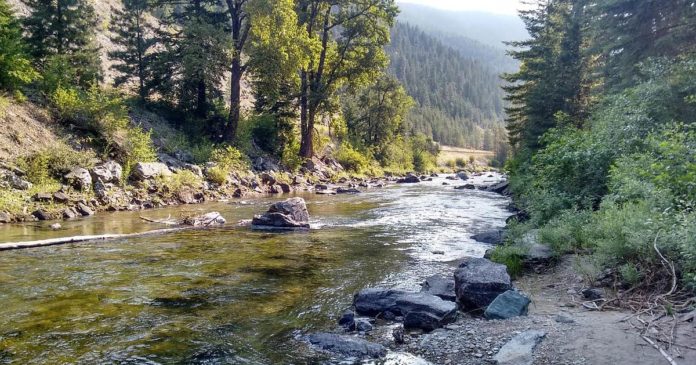Warm water, low flow levels, and high temperatures have prompted fishing restrictions on several rivers across western Montana this summer.
A “hoot-owl” closure has incrementally made its way the entire length of the Clark Fork River from the confluence with the Flathead up north, all the way to its headwaters at Anaconda. Hoot owl orders prohibit fishing from 2 p.m. until midnight.
This means the early angler gets the fish.
Vivaca Crowser, the Regional Information and Education Manager with Montana Fish Wildlife and Parks explained the restrictions.
“Hoot owl protocol in simple terms is to not fish during the hottest hours of the day, in order to take away an additional stressor to fish during times of year when water flows are down and temperatures are up,” Crowser said. “They are already stressed under these conditions, so by limiting fishing to cooler hours of the day, we are helping the fish.”
Additional fishing restrictions took effect Aug. 2 for rivers in Mineral County including Fish Creek and the St. Regis River.
“Fish Creek was last in restrictions in 2007 and I don’t have a record of the St. Regis hitting restrictions in the past 15 years, and I am not sure if/when it ever has,” Crowser said. 2015 and 2007 were the most recent years when numerous hoot owl restrictions were in place.
These types of fishing constraints are most common on larger rivers than for smaller creeks and streams.
“Most of our area rivers have protocol that when the water reaches 73 degrees for three consecutive days then hoot owl are prompted,” Crowser said. “Once temperatures cool down below that trigger, then we reverse the restrictions. That typically happens in early-mid September because the longer nights make a big difference in cooling the water down, even if the air temperatures remain hot during the day.”
Water temperatures typically stay cooler than that in smaller creeks and streams, but restrictions can also be activated for other reasons.
“For example, for places like Fish Creek and the St. Regis, even temps over 60 degrees can be stressful for native fish like bull trout,” Crowser said. “That is the case currently and why restrictions were triggered. On creeks and streams that aren’t important areas for some of our native trout, then they don’t get put under restrictions.”
These guidelines can put local fishing guides between a rock and a hard place.
Brooks Sanford of St. Regis usually spends his summer floating the Clark Fork taking visitors out fishing for native trout, but with restrictions in place and little success it’s forced him to relocate.
This past weekend he took a group up to the Kootenai River near Libby. Before that he’s switched up his game plan bringing anglers to the Flathead River for smallmouth bass instead.
Regardless of what river you’re on or what species you’re casting for, right now the most important thing to keep in mind is the health of the fish.
In catch and release fishing, Crowser reiterated these steps, “Keep the fish in water as much as possible. Remove the hook gently. Using artificial lures with single and barbless hooks can make hook removal faster and easier. Let the fish recover before releasing it.”
St. Regis resident Layne Hansen is another fishing enthusiast who lives for evenings fly fishing on the Clark Fork River. But as much as he loves to pull out his rod and cast a fly, he recognizes when it’s time to give the river and the fish a break.
“I know these closures are hard on the guides, but I say close em’ down,” Hansen said. “In some ways I wish it had been sooner really.”
It was about two weeks ago when Hansen last went fishing at the confluence of the Clark Fork and the Flathea. They caught several bass and only a few trout.
“These restrictions are really an investment in the future fishing of this river, for next year’s trout and the years after that,” Hansen said. “We have to give them a break when conditions get like this.”
Hansen plans to put away his fly rod altogether until September when cooler temperatures arrive as well as some stellar fall fishing.
So, should anglers venture out to their favorite holes at all during restrictions? As far as ethics and enjoying fishing for the rest of this summer, heeding to FWP’s guidelines of fishing in the cooler morning hours should results in better outcomes for the fish. This should be combined with either keeping the fish, where regulations allow, or by using good catch and release techniques.
“Also, this is a time of year that where it is good to consider fishing areas with less stressful conditions for fish, such as larger lakes or reservoirs, or higher elevation mountain lakes,” Crowser said. “I look at it as a motivation to go explore areas that aren’t part of our normal routines. If you typically are used to fishing valley lakes and rivers, then it is a good time to check out a valley lake or reservoir you haven’t been to or hike to a mountain lake.”
According to the FWP’s website, as of Aug. 3, 19 Montana rivers and streams have seen fishing restrictions, and some have complete closures.
Credit: Source link































